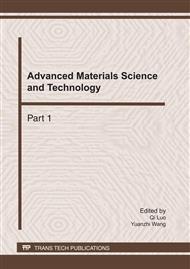p.667
p.673
p.679
p.685
p.691
p.697
p.702
p.707
p.712
Study on Printing Techniques of Modified Aluminum Paste Printing Ink
Abstract:
The print production conditions of print production conditions are very strict that ink layer must be uniform and achieve sufficient gloss. To optimize the optimum printing process for aluminum paste printing ink,the L9(34)orthogonal design is used to observe influential factors such as the modified ratio of aluminum paste printing ink (A), printing speed (B), drying power (C). Print gloss, masking effects and scratch results are determined to evaluate the effects of different processes, and the results are analyzed by grading methods including direct method and variance method. The results showed that the main factor was printing speed (B), and the optimum extraction process was that print speed was 70m/min, the first printing UV drying power was 12kw and the second printing UV drying power was 12kw with the second modified aluminum paste printing ink. The optimal extraction process is simple, repeatable and adapt to industrial production.
Info:
Periodical:
Pages:
691-696
Citation:
Online since:
January 2011
Authors:
Price:
Сopyright:
© 2011 Trans Tech Publications Ltd. All Rights Reserved
Share:
Citation:


